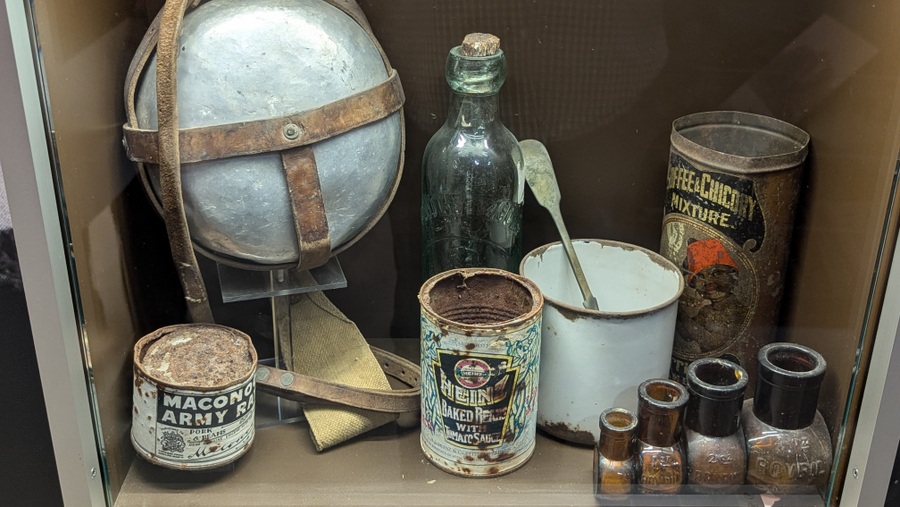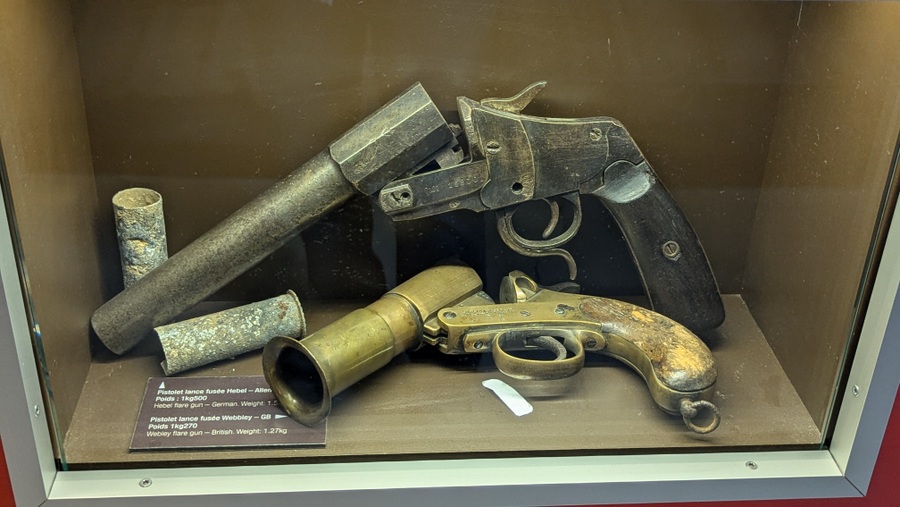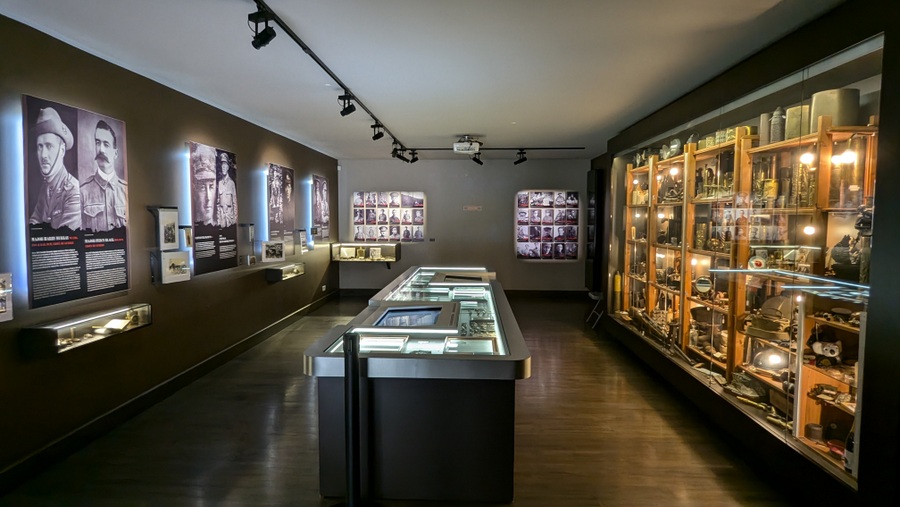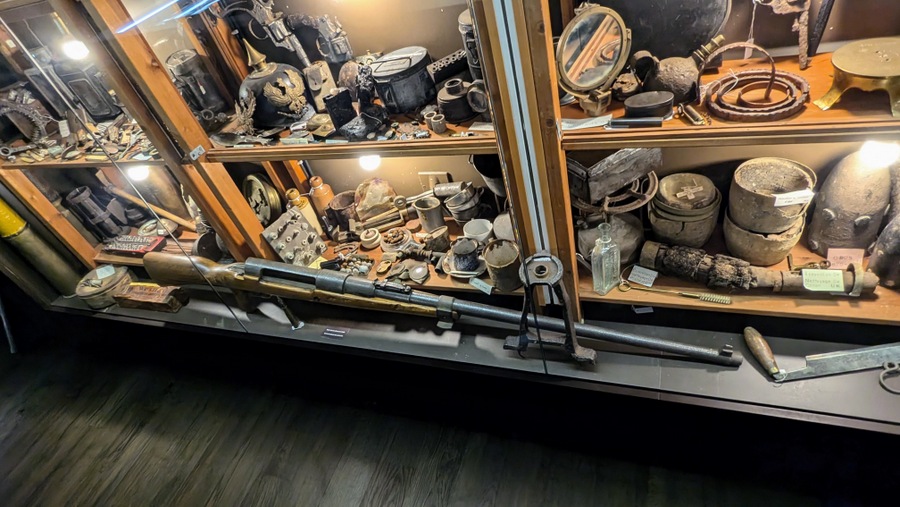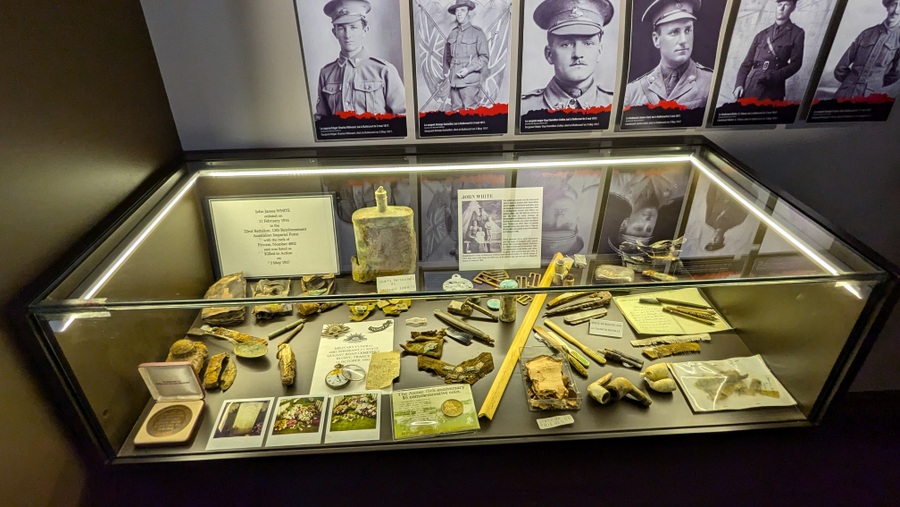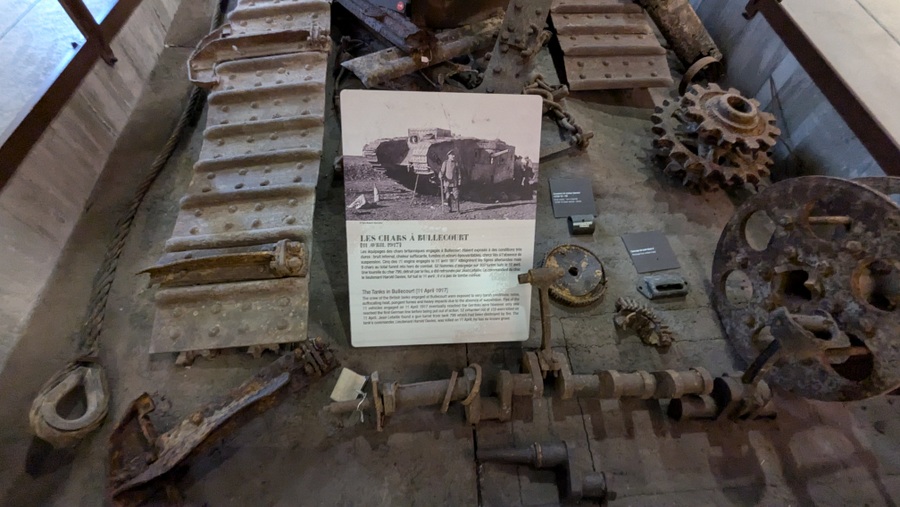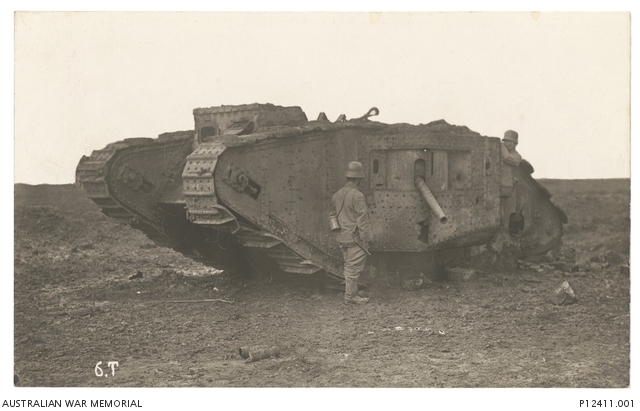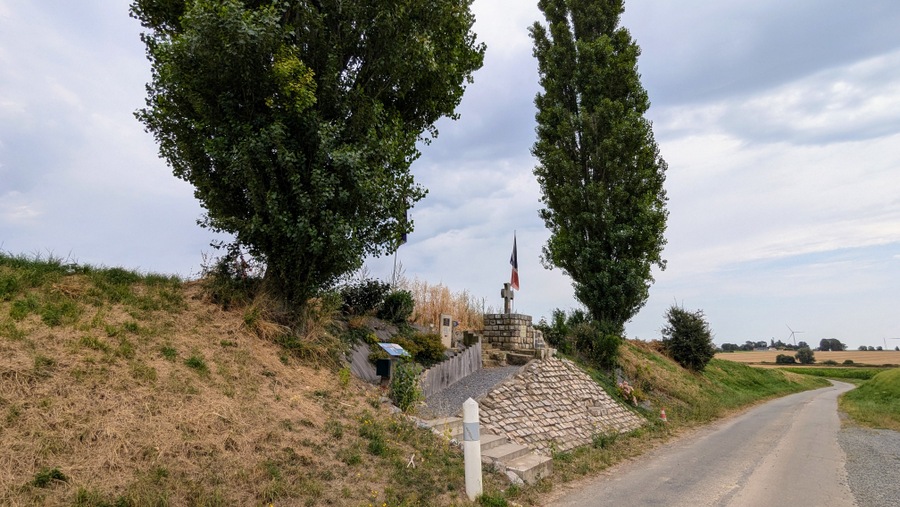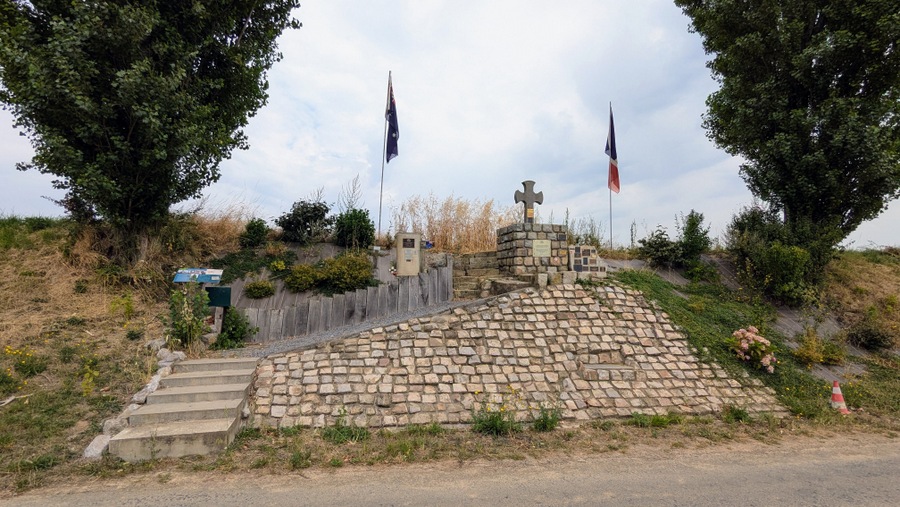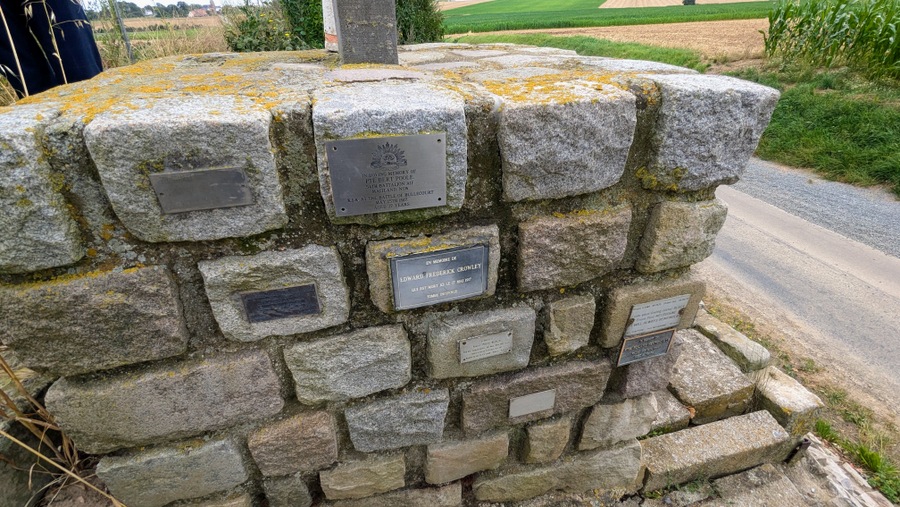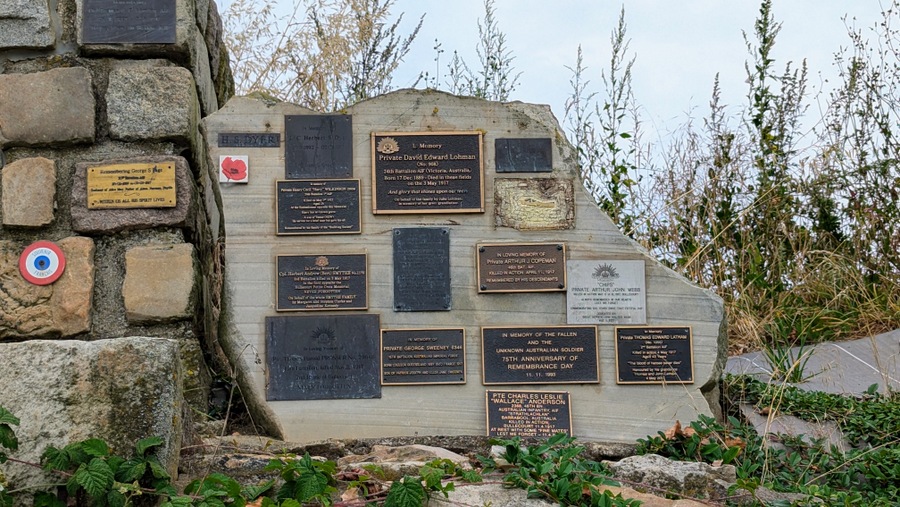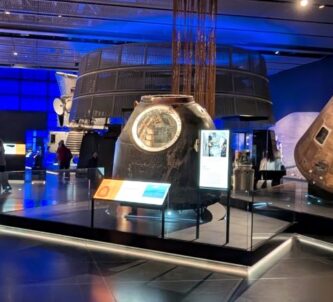The ‘Bullecourt 1917, Jean & Denise Letaille Museum’, to give it its full name, is the home of an evocative collection of WW1 artefacts collected and preserved by Bullecourt farmer and former mayor, Jean Letaille and his wife Denise.
Jean had been finding battlefield relics in his fields for years. In fact, everyone did. In the early eighties a new teacher from Bordeaux starting working at the local school and was rather alarmed to find all the kids had small collections of rusty ammunition and weapons!
Jean first put his collection on display in a small room in the town hall, then as it continued to grow, he moved it to one of his barns in 1995.
Through these items, the museum tells the history of the British and Australian’s (particularly Australians) first disastrous attempt to take the village of Bullecourt, part of the German Hindenburg Line fortification, in April 1917, and their second attempt a month later. As a result the museum attracted many Australian visitors, and caught the interest of the Australian Department of Veterans Affairs who were keen to support memorials and sites where Australian forces had fought in the First World War.
In 2008 Jean handed over his collection and the barn to the local commune who raised funds for a new purpose built modern museum with help from the Australian Government and local government bodies in Nord-Pas-de-Calais. Sadly Jean passed away a month before it was opened on ANZAC Day, 25 April 2012. (Denise died in 2004)
The Battles of Bullecourt
As usual with World War I, it all starts with an ambitious general and, as Black Adder’s Baldrick might say, a ‘cunning plan’ to assault the Germans on a massive scale, overwhelm them and end the war in a matter of days.
In this case the general was Robert Nivelle, Commander-in-Chief of the French Army, and his plan to quickly end the war involved a colossal French attack in the Aisne region, prefaced by a distracting offensive by British and Commonwealth forces on the Hindenburg Line at Arras, Vimy Ridge and Bullecourt.
The Hindenburg Line was a three line trench system, with underground bunkers, concrete fortifications and machine guns, running from Arras to Laffaux. It had been built by the German Army over the winter of 1916/17 as a fall-back after the terrible attrition of men & materials during the campaigns of the previous summer. It’s main purpose was to shorten the frontline and thus reduce the number of troops required to defend it. In February 1917 the German Army retreated to this new line, which at Bullecourt actually wrapped around the village.
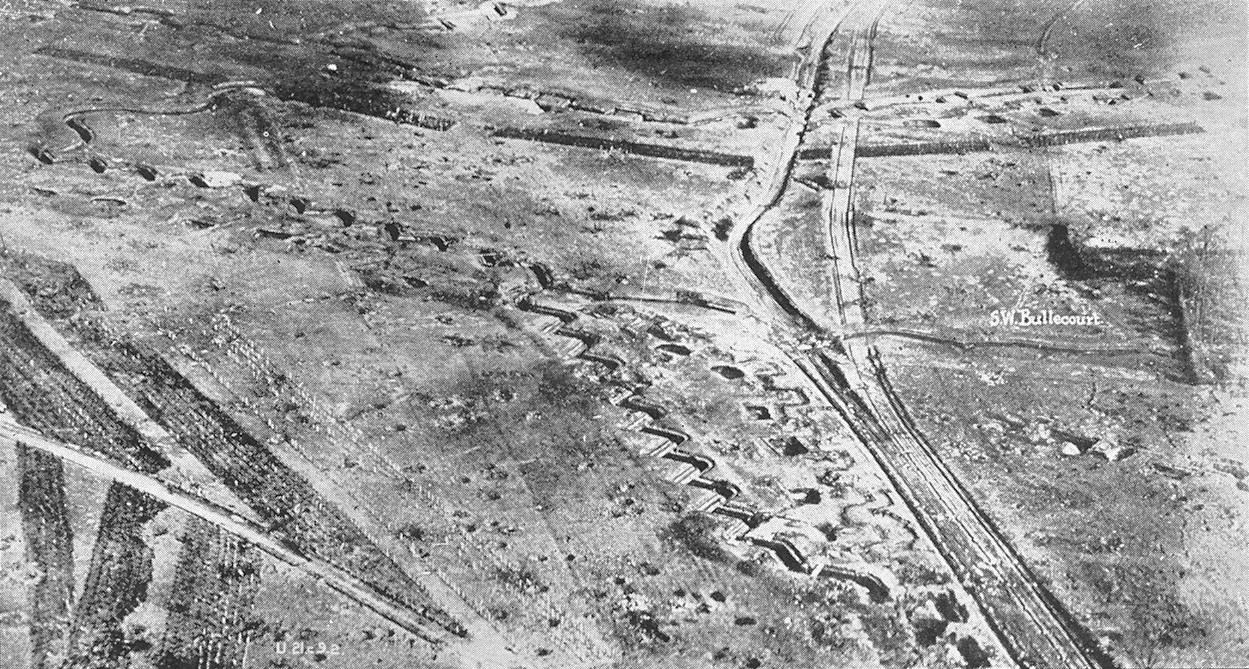
The assault began on 9 April 1917 at Arras, where thousands of troops suddenly emerged from the huge Wellington Quarry tunnels on the outskirts of the town, surprising the Germans on the Hindenburg Line overlooking the town. At first the assault went well but it began to get bogged down and became the usual First World War slugfest with terrible casualties.
Fifteen kilometres to the south east, the commander of the Fifth Army, General Gough, heard about the advances being made at Arras (and by the Canadians on Vimy Ridge), and thought, wrongly, that the German Army was collapsing. So he was eager to get going, but on the 10th Apr it was snowing (yes, April!), and the 12 British tanks he had ordered to support the attack were delayed.
It turned out the only available tanks were Mk2 training tanks. In order to fit through tunnels and bridges on the rail network their side casemates had been taken off, and when it came to fitting them back on, being individually manufactured to sloppy tolerances, they found they had to match the individual casemate to its parent tank… which held the whole process up. The attack would have to be postponed to the 11th April.
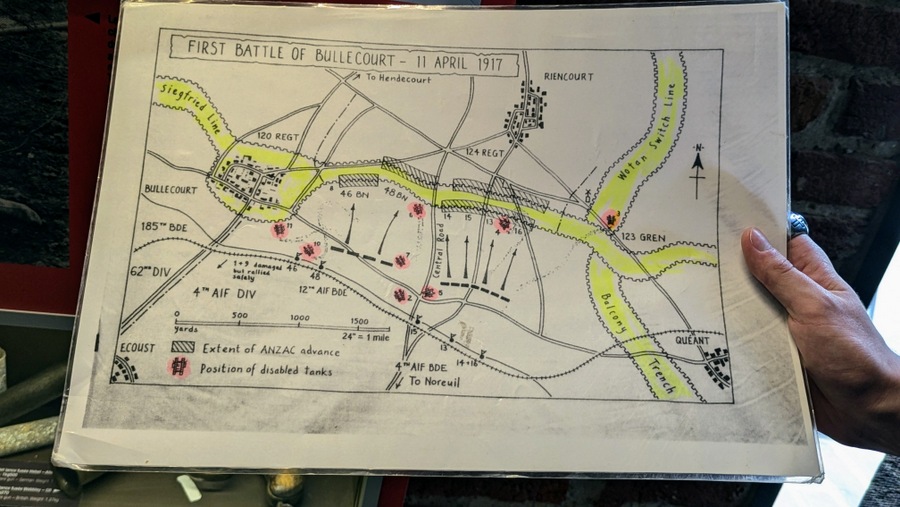
Meanwhile the Australian 4th Division had marched up to the start line for the attack, and now had to march back again. All this movement was noticed by the Germans who began to reinforce the line. In the end the assault began on 11 April with the British tanks ordered to break down the lines of barbed wire. By 7.00am some had broken down, most had been destroyed and a few went astray, but even without their tank support the Australian 4th and 12th brigades got into the German trenches where they were met with increasing resistance. Eventually they had to withdraw, but few made it back to their own lines.
It was a shambles. In all there were 3,290 Australian casualties, of which 1,166 were taken prisoner.
A second attempt to break through the Hindenburg Line at Bullecourt was made three weeks later. This was a more prolonged battle. Once again, on 3 May 1917, the Australians were able to break into the German trenches. This time, facing repeated counter-attacks to dislodge them, they managed to hold onto their position for two weeks, till the 17th May when the Germans finally withdrew.
The cost of the fierce trench fighting in this second Battle of Bullecourt was again, heavy: 7, 482 killed or wounded.
The Museum and its artefacts
The museum is not large (It suggests an average visit is 50 minutes).
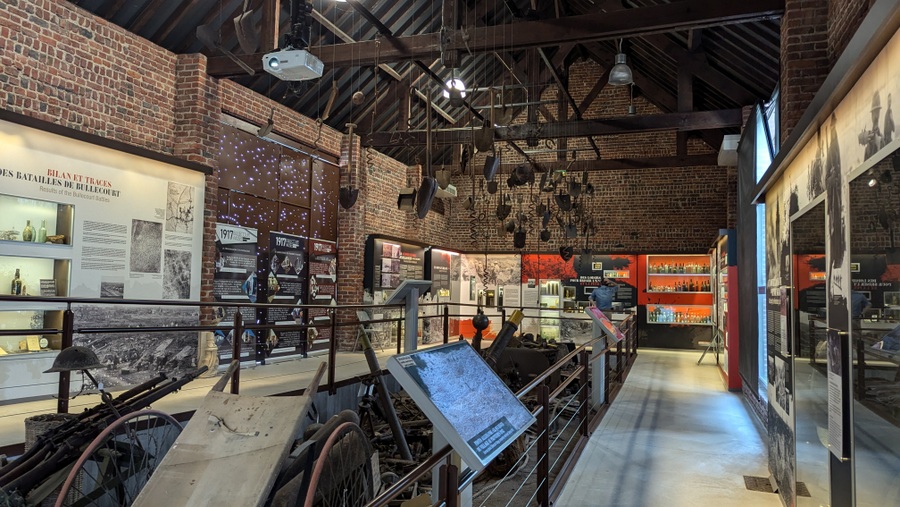
There are two sections: the ‘Battle Room’ is the main gallery, where the path wraps around a central display area where much of the weapons and wreckage dug up in the surrounding fields is displayed. Around the walls are maps, photos, info panels, and display cabinets with uniforms, weapons, medical equipment, bottles and tins, and other personal effects.
Then the ‘Tribute Hall’ covers the personal stories and images of Australians and other nations who fought, died or went missing at Bullecourt and their related artefacts and documents.
All the artefacts in the museum essentially come from two sources; items dug out of the ground (Battle Room), and items & memorabilia donated by relatives of the men who fought here (Tribute Hall).
The museum has an audio guide (included in the ticket price).
Things to look out for…
Amongst the wreckage in the centre of the Battle Room are a pair of 200mm ‘Livens’ mortars that could hurl a mortar shell filled with Phosgene gas or a flammable liquid over a kilometre and a half.
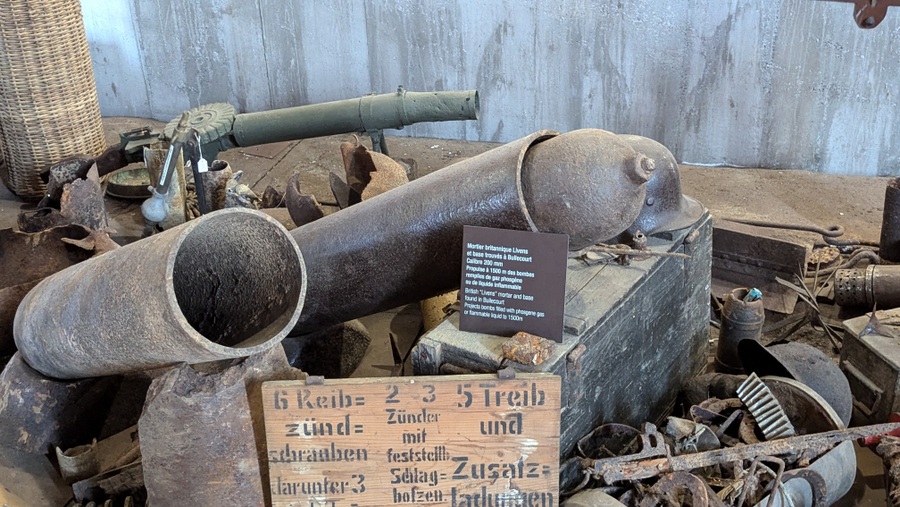
I’ve never seen German ‘turtle’ grenades before, but you can see how they got their name!

At one end of the trench of wreckage there’s the rusty remains of track, gear wheels, and a crankshaft from Tank No. 799, which had been disabled by enemy gunfire, early in the battle on 11 April.
Memorials
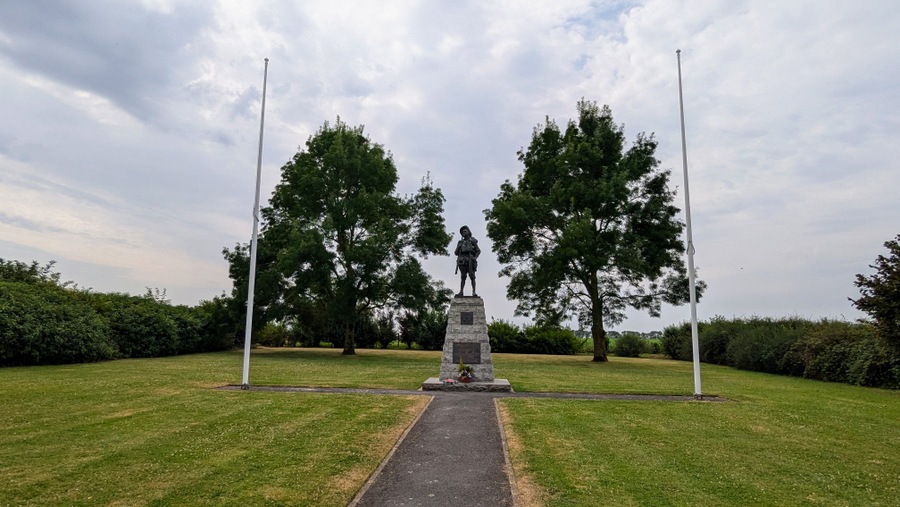
There are some poignant memorials near the museum, that Alexandre Blondel, the Médiateur Culturel at the Bullecourt museum, is keen for visitors to see. He’ll give you directions.
At the village church is the “Slouch Hat” memorial to the British and Australian soldiers who lost their lives at Bullecourt, and next to it is a small brick memorial dedicated to the tank crews of the HBMGC* who also lost their lives. A piece of Mk4 tank track lays in front of it.
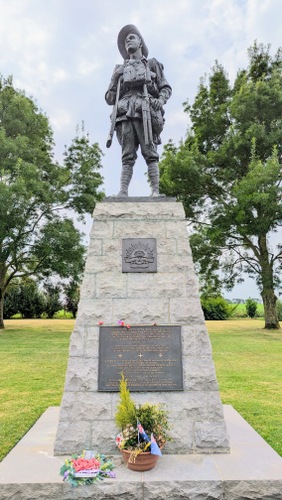
Just outside the village on the Rue des Australiens towards the hamlet of Le Brullé, there is a memorial garden on the site of the front line. It was in the fields around this garden that the Australians stormed towards the Germans at Bullecourt on 9 April 1917, and this was also the ridge that they managed to occupy in the second Battle of Bullecourt.
There is an ornate 3D memorial plaque left by the Australian Department of Veterans Affairs at the entrance, but the garden is dominated by a statue of an Australian soldier, known as the “Bullecourt Digger”. He represents the spirit of all Australian soldiers who fought in Europe, wearing the insignias of all four Australian infantry divisions.
Touchingly, when he was commissioned, the Australian sculptor, Peter Corlett, did some research and discovered his father, Private Kenneth Corlett, had served at Bullecourt, so he gave the sculpture the face of his father as a young man.
That is not all of the memorials.
Two hundred metres along the road, there is a collection of individual memorial stones to soldiers who died nearby.
* The Heavy Branch of the Machine Gun Corps (HBMGC) was the first unit in the British Army to use tanks in combat. The HBMGC became the Tank Corps on July 28, 1917.
Declaration: I was on a self-driving research trip supported by Pas-de-Calais Tourisme. Museum entry was complementary.
Factbox
Website:
The museum doesn’t have its own website but the local tourist office covers it in theirs Visit Bullecourt 1917 Museum, and the museum does have a Facebook page.
Getting there:
1 bis
rue d’Arras
62128 Bullecourt
France
There’s no dedicated parking for the museum but it’s not too hard to find spaces on the street.
Entry Price (2024):
| Individual | Groups/schools | |
|---|---|---|
| Adult | € 5.00 | € 4.00 |
| Reduced rate, eg. student | € 3.00 | € 2.00 |
| Children under 12 FREE | ||
Opening Hours (2024):
| April to September | Mid-Feb to Mar & Oct to Mid-Dec | |||
|---|---|---|---|---|
| Morning | Afternoon | Morning | Afternoon | |
| Mon | – | – | – | – |
| Tue | 10.00 – 12.30 | 13.30 – 18.00 | ||
| Wed | 10.00 – 12.30 | 13.30 – 18.00 | – | 13.30 – 17.30 |
| Thu | – | – | – | – |
| Fri | – | 13.30 – 18.00 | – | 13.30 – 17.30 |
| Sat | – | 13.30 – 18.00 | 13.30 – 17.30 | |
| Sun | – | 13.30 – 18.00 | – | 13.30 – 17.30 (1st & 3rd Sun of month only) |
Annual closure from mid-Dec to mid-Feb and every Sun in December. Closed on public holidays.


